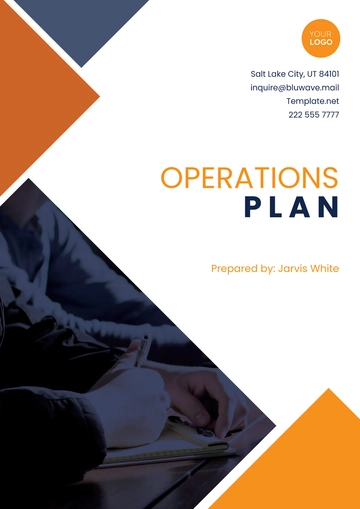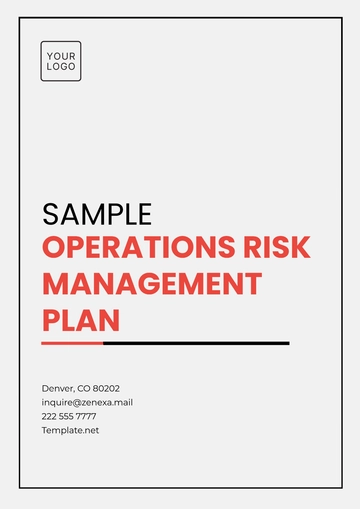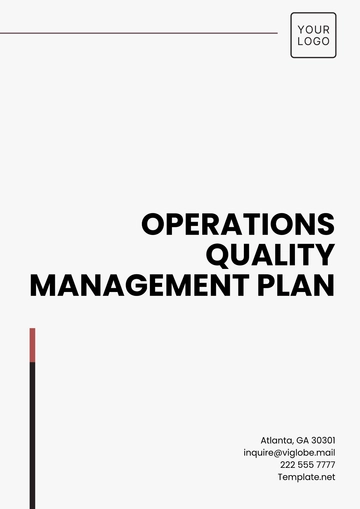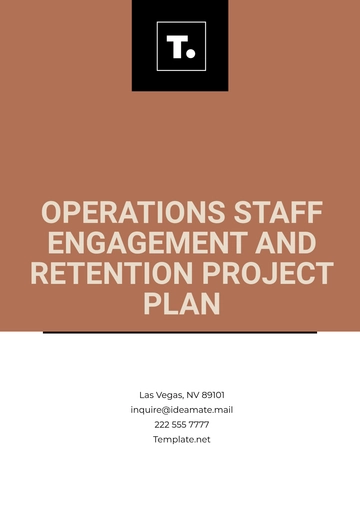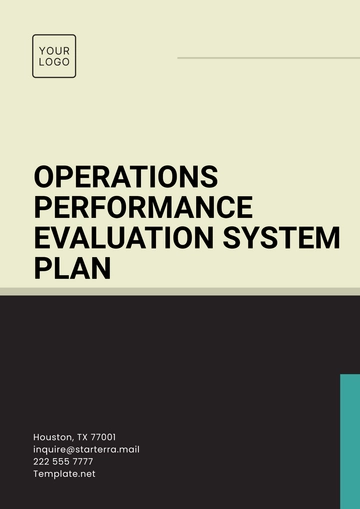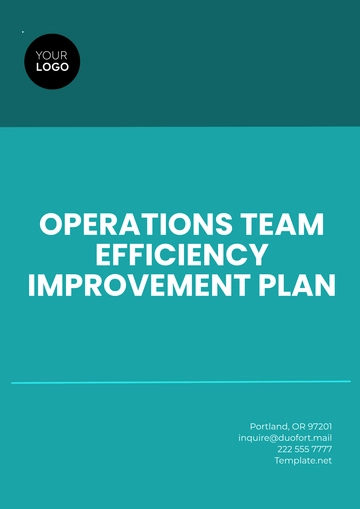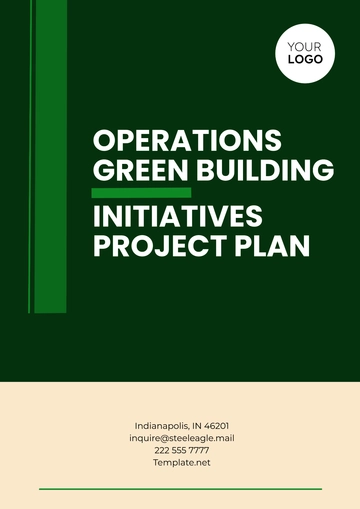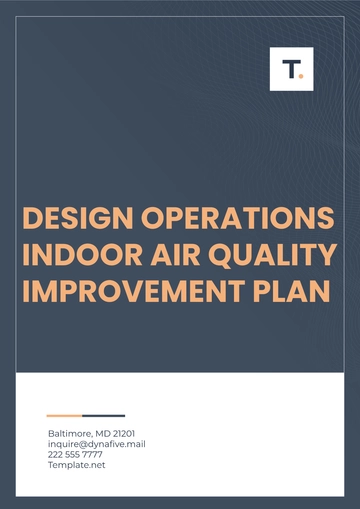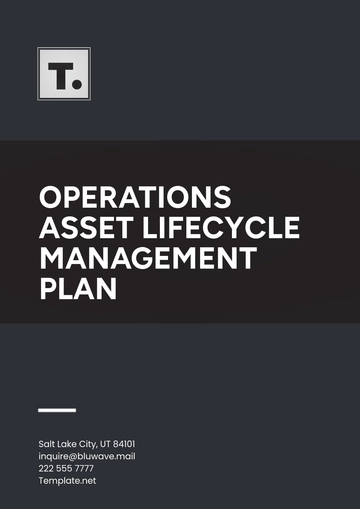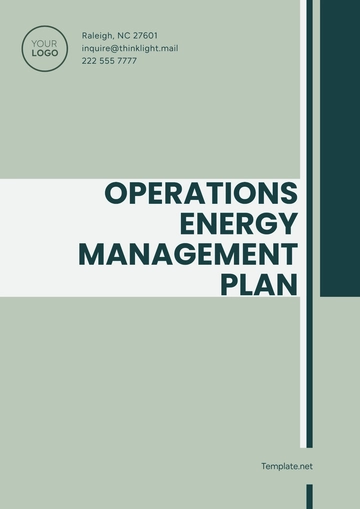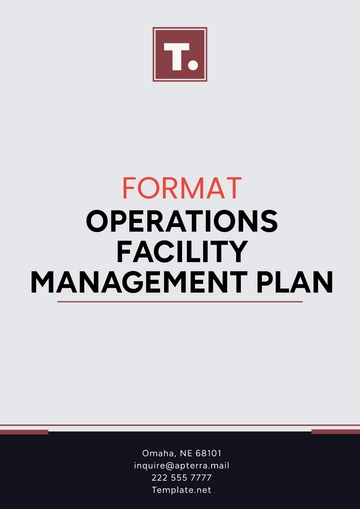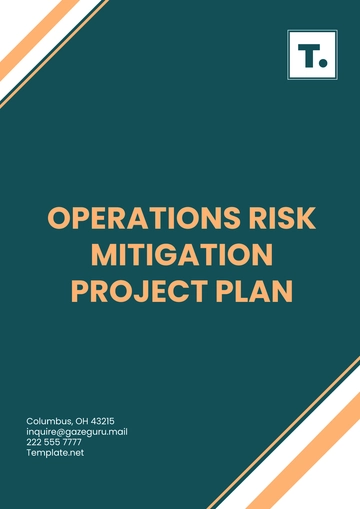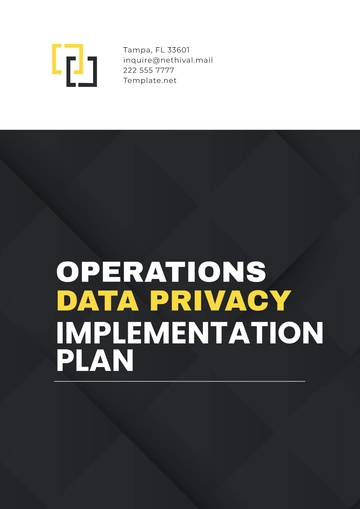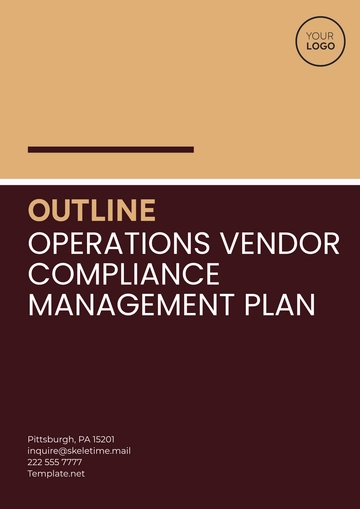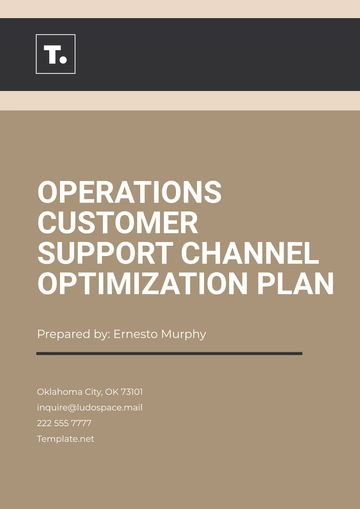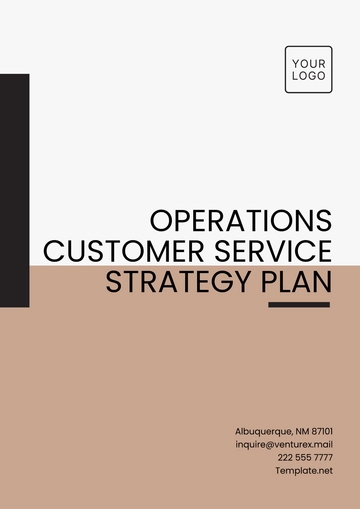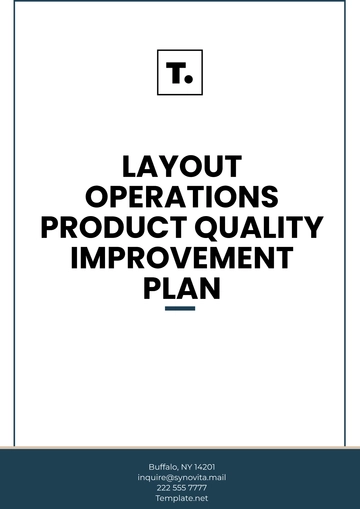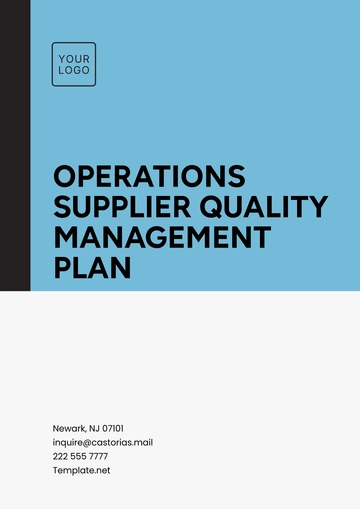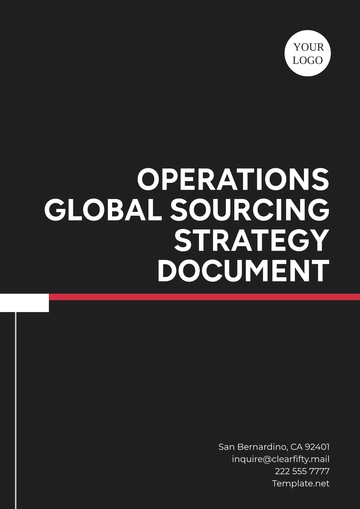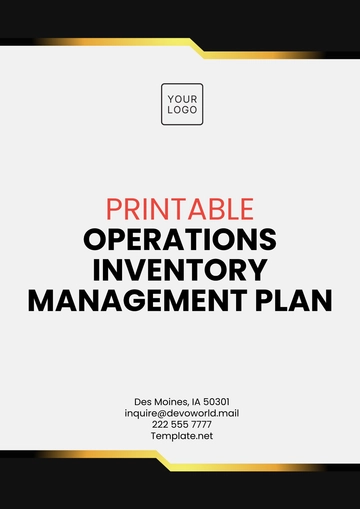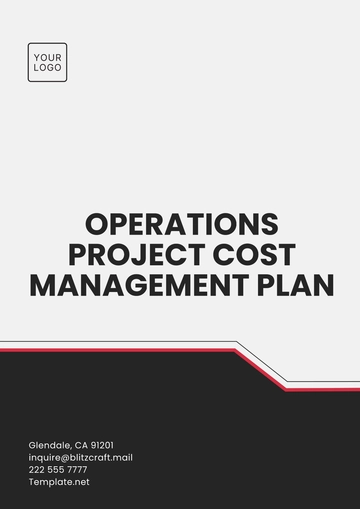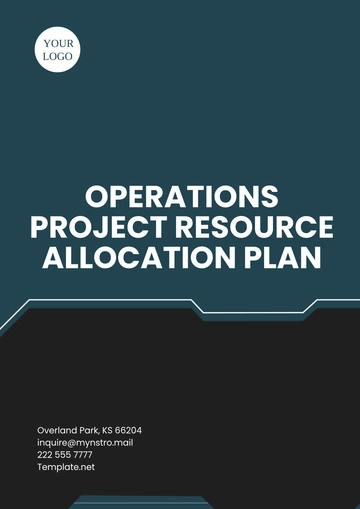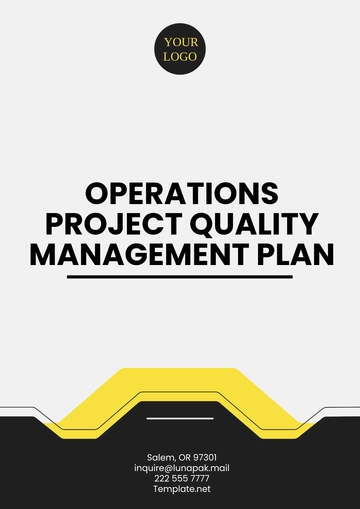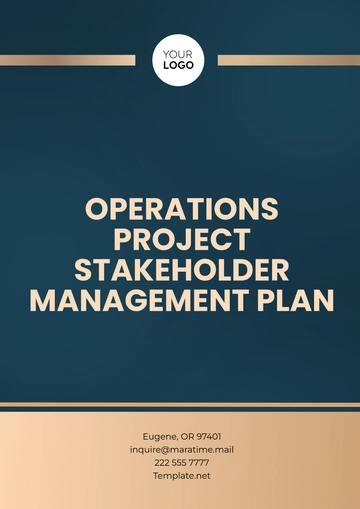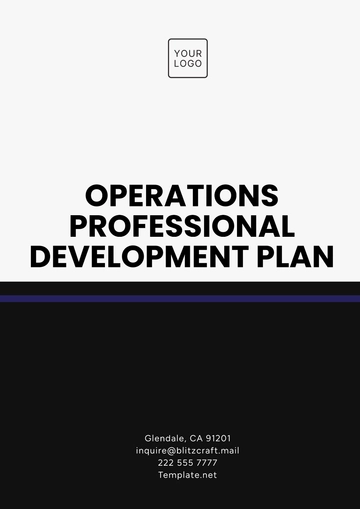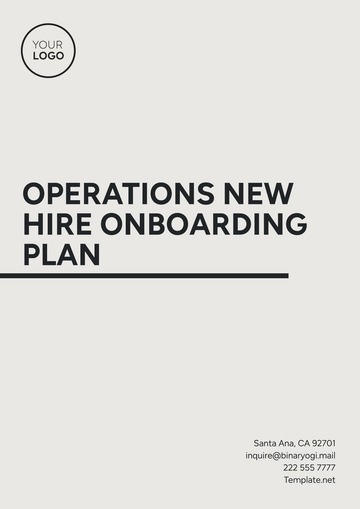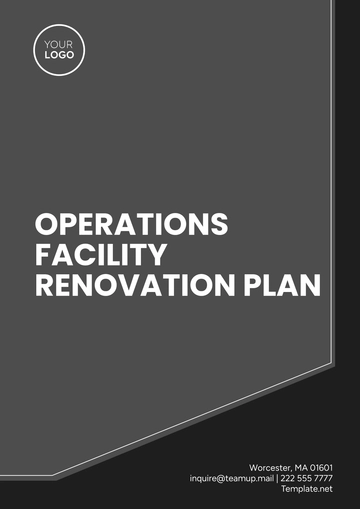Free Restaurant Operational Plan
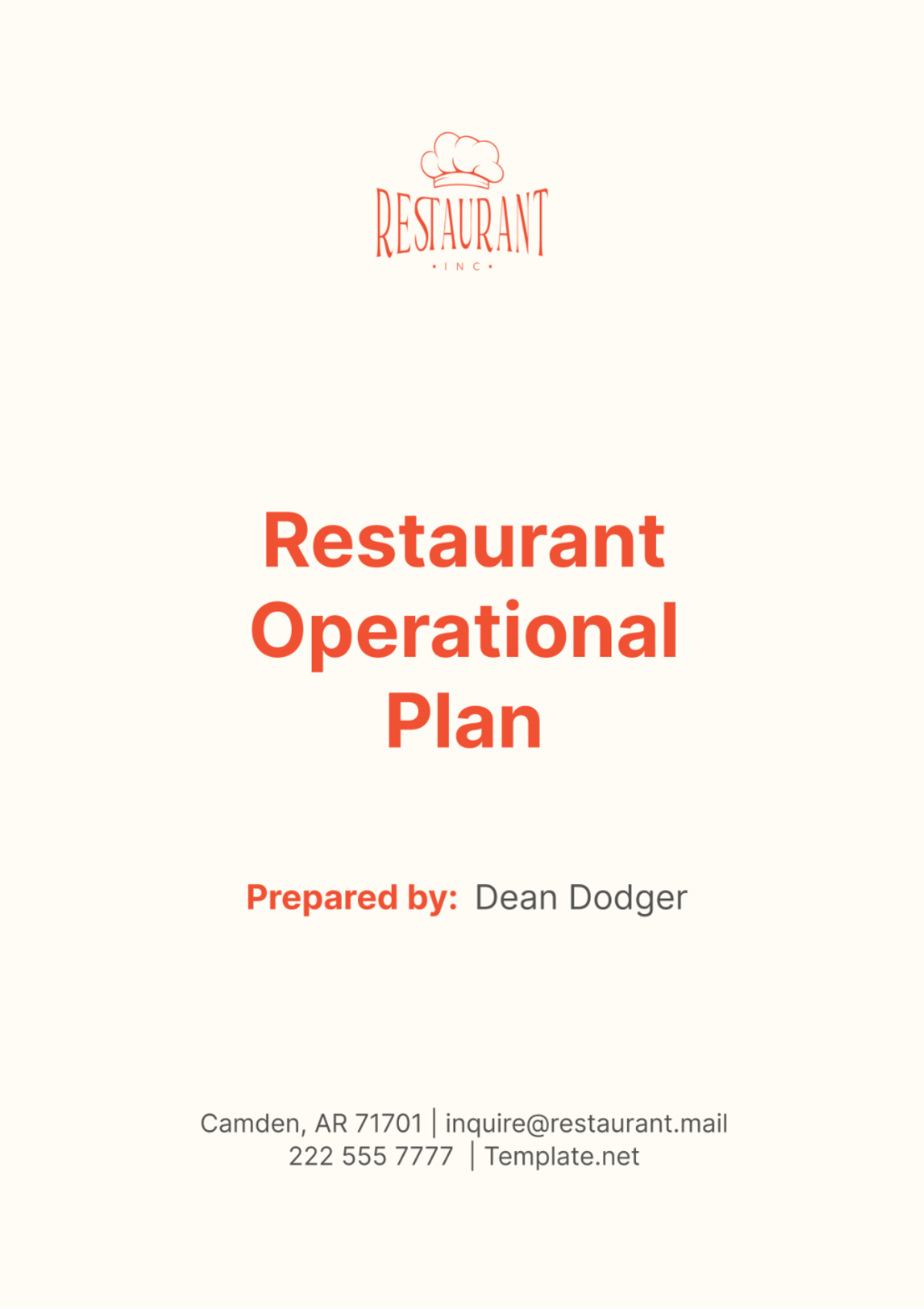
I. Executive Summary
A. Overview of the Restaurant
Our restaurant, [Your Company Name], is a fine dining establishment located in the heart of downtown. With a focus on modern European cuisine and impeccable service, we aim to provide an unparalleled dining experience for our guests.
B. Mission and Vision
Our mission is to delight our guests with exquisite food, exceptional service, and an inviting atmosphere, creating memorable dining experiences that keep them coming back. We envision becoming the go-to destination for discerning diners seeking refined culinary creations and unparalleled hospitality.
C. Key Objectives
Establish [Your Company Name] as a premier dining destination in the region.
Maintain high standards of food quality, service excellence, and customer satisfaction.
Cultivate a loyal customer base and foster positive word-of-mouth referrals.
Achieve profitability and sustainable growth through efficient operations and strategic marketing initiatives.
D. Summary of Operational Strategies
Our operational strategies focus on menu innovation, staff training, customer engagement, and cost management to deliver exceptional value to our guests while maximizing profitability and ensuring compliance with health and safety regulations.
II. Concept and Branding
A. Restaurant Concept
[Your Company Name] offers a contemporary interpretation of classic European cuisine, blending traditional flavors with modern techniques and presentation. Our elegant yet inviting ambiance provides the perfect setting for intimate dinners, celebrations, and corporate gatherings.
B. Target Market
Our target market consists of affluent professionals, food enthusiasts, and special occasion diners seeking refined culinary experiences and attentive service. We aim to appeal to both local residents and visitors to the area seeking elevated dining options.
C. Brand Identity
[Your Company Name] embodies sophistication, culinary expertise, and personalized hospitality. Our brand identity reflects our commitment to culinary excellence, attention to detail, and creating lasting memories for our guests.
D. Unique Selling Proposition (USP)
Our unique selling proposition lies in our chef-driven approach to menu development, curated wine selection, and dedication to providing personalized service tailored to each guest's preferences and dietary requirements.
III. Menu Development
A. Menu Overview
Our menu showcases a diverse selection of appetizers, entrees, and desserts inspired by the flavors of Europe, with a focus on seasonal ingredients and creative presentations.
B. Culinary Vision
Our culinary team, led by Executive Chef Marie Leclerc, combines classic techniques with innovative flair to create dishes that are both visually stunning and delightfully flavorful.
C. Menu Items and Categories
Appetizers: Seared foie gras, artisanal cheese platter, truffle-infused mushroom soup.
Entrees: Beef Wellington, seared sea bass with lemon beurre blanc, wild mushroom risotto.
Desserts: Crème brûlée trio, chocolate lava cake, seasonal fruit tart.
D. Pricing Strategy
Our pricing strategy reflects the quality of ingredients, complexity of preparation, and overall dining experience, positioning [Your Company Name] as a premium dining destination while offering value for money.
E. Special Dietary Options
We offer a range of vegetarian, vegan, gluten-free, and dairy-free options to accommodate guests with dietary restrictions or preferences, ensuring that all diners can enjoy a memorable meal with us.
IV. Management Team and Organizational Structure
A. Ownership and Management
[Your Company Name] is owned and operated by Mr. David Smith, a seasoned restaurateur with over 20 years of experience in the hospitality industry. The day-to-day operations are overseen by General Manager Sarah Johnson, who brings extensive expertise in restaurant management and customer service.
B. Key Personnel and Roles
[Executive Chef]: Responsible for menu development, culinary operations, and kitchen management.
[Front-of-House Manager]: Manages dining room operations, guest relations, and staff training.
[Head Sommelier]: Curates the wine list, provides wine pairings, and oversees beverage service.
[Finance Manager]: Handles financial management, budgeting, and accounting functions.
[Marketing Coordinator]: Manages marketing initiatives, social media presence, and promotional activities.
V. Staffing Plan
A. Staffing Requirements
We aim to maintain a dedicated team of culinary professionals, service staff, and support personnel to ensure seamless operations and exceptional guest experiences during all service periods.
B. Job Descriptions
Line Cooks: Responsible for food preparation, cooking, and plating according to recipes and quality standards.
Servers: Provide attentive and knowledgeable service to guests, take orders, and ensure guest satisfaction.
Hosts/Hostesses: Greet guests, manage reservations, and facilitate seating arrangements.
Bartenders: Prepare and serve cocktails, wine, and other beverages, while engaging with guests in a friendly and professional manner.
Dishwashers: Maintain cleanliness and organization in the dishwashing area, support kitchen staff with cleaning tasks.
C. Recruitment and Hiring Process
We recruit talented individuals who share our passion for hospitality and commitment to excellence through job postings, referrals, and networking. The hiring process includes resume screening, interviews, and reference checks to ensure the right fit for each position.
D. Training and Development Programs
All staff members undergo comprehensive training on food safety, service standards, menu knowledge, and hospitality best practices. Ongoing training and development opportunities are provided to enhance skills and promote career advancement within the organization.
E. Staff Scheduling
Staff schedules are created based on forecasted business volumes, staffing requirements, and employee availability, ensuring adequate coverage during peak periods while optimizing labor costs and maintaining work-life balance for staff members.
VI. Operating Procedures
A. Opening Procedures
Our opening procedures are meticulously designed to set the stage for a successful service period. This includes thorough cleaning and organization of all areas, setting up dining room tables with precision, and ensuring our team is briefed on the day's specials and service expectations during pre-shift meetings.
B. Closing Procedures
As we wind down for the day, our closing procedures ensure that every aspect of the restaurant is attended to with care. From completing thorough cleaning tasks and restocking supplies to conducting post-shift meetings to review performance and address any concerns, our team works diligently to ensure a smooth transition to the next day's operations.
C. Reservation Management
Our reservation management system allows us to efficiently handle guest bookings while maximizing seating capacity and minimizing wait times. We confirm reservations promptly, maintain a waitlist during peak hours, and strive to accommodate special requests and preferences to enhance the overall guest experience.
D. Food Preparation and Service Standards
We uphold rigorous food preparation and service standards to consistently deliver exceptional dining experiences. Our kitchen team adheres to standardized recipes and portion sizes, while our front-of-house staff coordinates seamlessly to ensure timely delivery of food and beverages, always prioritizing quality and presentation.
E. Table Turnover and Guest Experience
Balancing efficiency with hospitality, we aim to maximize table turnover without compromising on the quality of service. Anticipating and addressing guest needs promptly and courteously is paramount, and we actively seek feedback to continuously improve and exceed guest expectations.
F. Cleaning and Maintenance Protocols
Our cleaning and maintenance protocols are thorough and systematic to uphold the highest standards of cleanliness and safety. From daily cleaning checklists to regular equipment inspections and maintenance schedules, we prioritize the upkeep of our facilities to provide a welcoming and hygienic environment for our guests and staff.
VII. Supplier Relationships
A. Vendor Selection and Partnerships
We prioritize building strong relationships with suppliers who share our commitment to quality and sustainability. By sourcing ingredients from reputable vendors and fostering partnerships with local farmers and producers, we ensure that our menu offerings are of the highest caliber and support ethical and environmentally conscious practices.
B. Supply Chain Management
Effective supply chain management is essential to the smooth operation of our restaurant. We carefully monitor supplier performance, negotiate favorable terms, and implement efficient inventory control measures to minimize waste and maintain optimal stock levels while ensuring the freshness and integrity of our ingredients.
C. Inventory Control
Our inventory control procedures are designed to optimize efficiency and accuracy in managing stock levels. Through the use of inventory management systems and regular audits, we track usage patterns, identify variances, and streamline ordering processes to minimize overhead costs and maximize profitability.
D. Ordering and Delivery Processes
Timely ordering and seamless delivery are critical components of our supply chain operations. We maintain open lines of communication with suppliers, place orders in advance to ensure product availability, and meticulously inspect incoming shipments for quality and accuracy, enabling us to uphold our commitment to excellence in every aspect of our offerings.
VIII. Marketing and Promotion
A. Marketing Strategy
Our marketing strategy focuses on building brand awareness, driving customer engagement, and increasing foot traffic to the restaurant. We utilize a combination of online and offline channels, including social media, email marketing, print advertising, and strategic partnerships, to reach our target audience and communicate our unique value proposition.
B. Branding and Advertising Campaigns
Through cohesive branding and compelling advertising campaigns, we seek to convey the essence of our restaurant's concept, ambiance, and culinary offerings. By consistently reinforcing our brand identity across various touchpoints, we aim to create a strong and memorable impression on potential guests and encourage repeat visits.
C. Social Media Presence
We maintain an active presence on popular social media platforms such as Instagram, Facebook, and Twitter to engage with our audience, showcase our menu offerings, and share behind-the-scenes glimpses of our kitchen and dining experiences. Through engaging content, interactive posts, and targeted advertising, we foster a sense of community and loyalty among our followers.
D. Loyalty Programs
To reward our loyal customers and incentivize repeat business, we offer a tiered loyalty program that provides exclusive perks, discounts, and special offers based on customer spending and engagement. By recognizing and appreciating our regular patrons, we aim to foster long-term relationships and encourage word-of-mouth referrals.
E. Partnerships and Collaborations
We actively seek opportunities to collaborate with local businesses, influencers, and organizations to expand our reach and attract new customers. From hosting themed events and pop-up dinners to participating in community initiatives and charity fundraisers, we leverage partnerships to enhance our brand visibility and connect with diverse audiences.
IX. Financial Projections and Budgeting
A. Revenue Forecasting
Our revenue forecasting process involves analyzing historical sales data, market trends, and seasonal fluctuations to project future revenues with accuracy. By taking into account factors such as menu pricing, seating capacity, and anticipated guest traffic, we develop realistic revenue targets and performance benchmarks.
B. Expense Projections
We meticulously track and forecast expenses across various categories, including food and beverage costs, labor expenses, overheads, marketing expenditures, and administrative costs. By closely monitoring our financial performance and identifying areas for cost optimization, we strive to maintain healthy profit margins and financial stability.
C. Profit Margin Analysis
Through regular profit margin analysis, we evaluate the profitability of our menu items, pricing strategies, and operational efficiency. By identifying high-margin offerings and cost-saving opportunities, we aim to maximize profitability and allocate resources effectively to support our business growth objectives.
D. Budget Allocation
Our budget allocation process involves allocating resources based on strategic priorities, revenue projections, and operational requirements. By prioritizing investments in areas such as menu development, staff training, marketing initiatives, and capital improvements, we ensure that resources are deployed in a manner that aligns with our overall business objectives.
E. Cash Flow Management
Effective cash flow management is essential to the financial health and sustainability of our restaurant. We maintain sufficient liquidity to meet operational expenses, vendor payments, and debt obligations while strategically managing accounts receivable, inventory levels, and capital investments to optimize cash flow and mitigate financial risks.
X. Quality Control and Assurance
A. Food Quality Standards
We uphold stringent food quality standards throughout every stage of the preparation and serving process. Our culinary team meticulously selects and inspects ingredients for freshness and integrity, while adhering to standardized recipes and cooking techniques to ensure consistency and excellence in every dish.
B. Service Quality Standards
Service excellence is a cornerstone of our operations, and we continuously strive to exceed guest expectations at every touchpoint. Our front-of-house staff undergoes extensive training in hospitality best practices, communication skills, and guest engagement to deliver personalized and attentive service that enhances the overall dining experience.
C. Customer Feedback and Satisfaction Surveys
We actively solicit feedback from our guests through comment cards, online reviews, and satisfaction surveys to gauge their dining experiences and identify areas for improvement. By listening to our customers' feedback and responding promptly to their concerns, we demonstrate our commitment to continuous improvement and customer satisfaction.
D. Continuous Improvement Initiatives
We embrace a culture of continuous improvement and innovation to stay ahead of evolving customer preferences and industry trends. Through regular staff training, menu updates, quality audits, and performance evaluations, we seek to identify opportunities for enhancement and implement proactive measures to elevate the overall quality of our offerings and services.
XI. Health and Safety Compliance
A. Compliance with Health Codes and Regulations
We adhere strictly to local health codes, regulations, and food safety standards to ensure the health and well-being of our guests and staff. Our kitchen facilities undergo regular inspections by health authorities, and our team members receive comprehensive training on food handling, sanitation, and hygiene practices.
B. Food Safety Protocols
Food safety is of paramount importance in our operations, and we implement rigorous protocols to prevent contamination, cross-contamination, and foodborne illnesses. This includes proper storage, handling, and temperature control of ingredients, thorough cleaning and sanitization of kitchen equipment and utensils, and regular monitoring of expiration dates and shelf life.
C. Workplace Safety Procedures
We are committed to providing a safe and healthy work environment for our employees by implementing workplace safety procedures and training programs. This includes ergonomic workstation design, proper use of protective equipment, and protocols for handling hazardous materials to minimize the risk of accidents and injuries.
D. Emergency Preparedness Plans
We have comprehensive emergency preparedness plans in place to address potential crises such as fires, medical emergencies, or natural disasters. Our staff is trained to respond quickly and effectively to emergency situations, and we conduct regular drills and simulations to ensure readiness and minimize disruption to operations and guest safety.
XII. Contingency Plans
A. Risk Assessment
We conduct regular risk assessments to identify potential threats and vulnerabilities that could impact our operations. These may include external factors such as economic downturns, supply chain disruptions, or unforeseen events like natural disasters or public health emergencies.
B. Mitigation Strategies
Based on our risk assessment findings, we develop mitigation strategies to minimize the impact of potential risks and disruptions. This may involve diversifying our supplier base, maintaining adequate inventory levels, investing in business continuity planning, and securing insurance coverage against unforeseen events.
C. Business Continuity Plans
We have robust business continuity plans in place to ensure that essential operations can continue in the event of a disruption. This includes backup systems for critical infrastructure, remote work capabilities for key personnel, and clear communication channels to keep stakeholders informed during emergencies.
D. Crisis Management Protocols
In the event of a crisis, we activate our crisis management protocols to coordinate an effective response and minimize negative consequences. This includes establishing a crisis management team, implementing communication strategies to address stakeholders' concerns, and collaborating with relevant authorities to mitigate risks and restore normal operations as quickly as possible.
- 100% Customizable, free editor
- Access 1 Million+ Templates, photo’s & graphics
- Download or share as a template
- Click and replace photos, graphics, text, backgrounds
- Resize, crop, AI write & more
- Access advanced editor
Manage your restaurant operations with ease using the Restaurant Operational Plan Template from Template.net. This editable and customizable template comes with an intuitive AI Editor Tool, allowing you to tailor your plan to your unique needs. Streamline your processes, enhance efficiency, and ensure success with this comprehensive tool at your fingertips.
You may also like
- Finance Plan
- Construction Plan
- Sales Plan
- Development Plan
- Career Plan
- Budget Plan
- HR Plan
- Education Plan
- Transition Plan
- Work Plan
- Training Plan
- Communication Plan
- Operation Plan
- Health And Safety Plan
- Strategy Plan
- Professional Development Plan
- Advertising Plan
- Risk Management Plan
- Restaurant Plan
- School Plan
- Nursing Home Patient Care Plan
- Nursing Care Plan
- Plan Event
- Startup Plan
- Social Media Plan
- Staffing Plan
- Annual Plan
- Content Plan
- Payment Plan
- Implementation Plan
- Hotel Plan
- Workout Plan
- Accounting Plan
- Campaign Plan
- Essay Plan
- 30 60 90 Day Plan
- Research Plan
- Recruitment Plan
- 90 Day Plan
- Quarterly Plan
- Emergency Plan
- 5 Year Plan
- Gym Plan
- Personal Plan
- IT and Software Plan
- Treatment Plan
- Real Estate Plan
- Law Firm Plan
- Healthcare Plan
- Improvement Plan
- Media Plan
- 5 Year Business Plan
- Learning Plan
- Marketing Campaign Plan
- Travel Agency Plan
- Cleaning Services Plan
- Interior Design Plan
- Performance Plan
- PR Plan
- Birth Plan
- Life Plan
- SEO Plan
- Disaster Recovery Plan
- Continuity Plan
- Launch Plan
- Legal Plan
- Behavior Plan
- Performance Improvement Plan
- Salon Plan
- Security Plan
- Security Management Plan
- Employee Development Plan
- Quality Plan
- Service Improvement Plan
- Growth Plan
- Incident Response Plan
- Basketball Plan
- Emergency Action Plan
- Product Launch Plan
- Spa Plan
- Employee Training Plan
- Data Analysis Plan
- Employee Action Plan
- Territory Plan
- Audit Plan
- Classroom Plan
- Activity Plan
- Parenting Plan
- Care Plan
- Project Execution Plan
- Exercise Plan
- Internship Plan
- Software Development Plan
- Continuous Improvement Plan
- Leave Plan
- 90 Day Sales Plan
- Advertising Agency Plan
- Employee Transition Plan
- Smart Action Plan
- Workplace Safety Plan
- Behavior Change Plan
- Contingency Plan
- Continuity of Operations Plan
- Health Plan
- Quality Control Plan
- Self Plan
- Sports Development Plan
- Change Management Plan
- Ecommerce Plan
- Personal Financial Plan
- Process Improvement Plan
- 30-60-90 Day Sales Plan
- Crisis Management Plan
- Engagement Plan
- Execution Plan
- Pandemic Plan
- Quality Assurance Plan
- Service Continuity Plan
- Agile Project Plan
- Fundraising Plan
- Job Transition Plan
- Asset Maintenance Plan
- Maintenance Plan
- Software Test Plan
- Staff Training and Development Plan
- 3 Year Plan
- Brand Activation Plan
- Release Plan
- Resource Plan
- Risk Mitigation Plan
- Teacher Plan
- 30 60 90 Day Plan for New Manager
- Food Safety Plan
- Food Truck Plan
- Hiring Plan
- Quality Management Plan
- Wellness Plan
- Behavior Intervention Plan
- Bonus Plan
- Investment Plan
- Maternity Leave Plan
- Pandemic Response Plan
- Succession Planning
- Coaching Plan
- Configuration Management Plan
- Remote Work Plan
- Self Care Plan
- Teaching Plan
- 100-Day Plan
- HACCP Plan
- Student Plan
- Sustainability Plan
- 30 60 90 Day Plan for Interview
- Access Plan
- Site Specific Safety Plan
